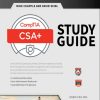Macroeconomic Theory A Dynamic General Equilibrium Approach 2th editon by Michael Wickens ISBN 1400842476 9781400842476
$70.00 Original price was: $70.00.$35.00Current price is: $35.00.
Instant download Macroeconomic Theory A Dynamic General Equilibrium Approach 2th Michael Wickens after payment
Macroeconomic Theory A Dynamic General Equilibrium Approach 2th editon by Michael Wickens – Ebook PDF Instant Download/Delivery: 1400842476, 9781400842476
Full dowload Macroeconomic Theory A Dynamic General Equilibrium Approach 2th editon after payment

Product details:
ISBN 10: 1400842476
ISBN 13: 9781400842476
Author: Michael Wickens
Macroeconomic Theory A Dynamic General Equilibrium Approach 2th Table of contents:
1 Introduction
1.1 Dynamic General Equilibrium versus Traditional Macroeconomics
1.2 Traditional Macroeconomics
1.3 Dynamic General Equilibrium Macroeconomics
1.4 The Structure of This Book
2 The Centralized Economy
2.1 Introduction
2.2 The Basic Dynamic General Equilibrium Closed Economy
2.3 Golden Rule Solution
2.3.1 The Steady State
2.3.2 The Dynamics of the Golden Rule
2.4 Optimal Solution
2.4.1 Derivation of the Fundamental Euler Equation
2.4.2 Interpretation of the Euler Equation
2.4.3 The Intertemporal Production Possibility Frontier
2.4.4 Graphical Representation of the Solution
2.4.5 Static Equilibrium Solution
2.4.6 Dynamics of the Optimal Solution
2.4.7 Algebraic Analysis of the Saddlepath Dynamics
2.5 Real-Business-Cycle Dynamics
2.5.1 The Business Cycle
2.5.2 Permanent Technology Shocks
2.5.3 Temporary Technology Shocks
2.5.4 The Stability and Dynamics of the Golden Rule Revisited
2.6 Labor in the Basic Model
2.7 Investment
2.7.1 q-Theory
2.7.2 Time to Build
2.8 Conclusions
3 Economic Growth
3.1 Introduction
3.2 Modeling Economic Growth
3.3 The Solow–Swan Model of Growth
3.3.1 Theory
3.3.2 Growth and Economic Development
3.3.3 Balanced Growth
3.4 The Theory of Optimal Growth
3.4.1 Theory
3.4.2 Additional Remarks on Optimal Growth
3.5 Endogenous Growth
3.5.1 The AK Model of Endogenous Growth
3.5.2 Human Capital Models of Endogenous Growth
3.6 Conclusions
4 The Decentralized Economy
4.1 Introduction
4.2 Consumption
4.2.1 The Consumption Decision
4.2.2 The Intertemporal Budget Constraint
4.2.3 Interpreting the Euler Equation
4.2.4 The Consumption Function
4.2.5 Permanent and Temporary Shocks
4.3 Savings
4.4 Life-Cycle Theory
4.4.1 Implications of Life-Cycle Theory
4.4.2 Model of Perpetual Youth
4.5 Nondurable and Durable Consumption
4.6 Labor Supply
4.7 Firms
4.7.1 Labor Demand without Adjustment Costs
4.7.2 Labor Demand with Adjustment Costs
4.8 General Equilibrium in a Decentralized Economy
4.8.1 Consolidating the Household and Firm Budget Constraints
4.8.2 The Labor Market
4.8.3 The Goods Market
4.9 Comparison with the Centralized Model
4.10 Conclusions
5 Government: Expenditures and Public Finances
5.1 Introduction
5.2 The Government Budget Constraint
5.2.1 The Nominal Government Budget Constraint
5.2.2 The Real Government Budget Constraint
5.2.3 An Alternative Representation of the GBC
5.3 Financing Government Expenditures
5.3.1 Tax Finance
5.3.2 Bond Finance
5.3.3 Intertemporal Fiscal Policy
5.3.4 The Ricardian Equivalence Theorem
5.4 The Sustainability of the Fiscal Stance
5.4.1 Case 1: [(1 + π)(1 + γ)]/(1 + R) > 1 (Stable Case)
5.4.2 Case 2: 0 < [(1 + π)(1 + γ)]/(1 + R) < 1 (Unstable Case)
5.4.3 Fiscal Rules
5.5 The Stability and Growth Pact
5.6 The Fiscal Theory of the Price Level
5.7 Optimizing Public Finances
5.7.1 Optimal Government Expenditures
5.7.2 Optimal Tax Rates
5.7.3 The Optimal Level of Debt
5.8 Conclusions
6 Fiscal Policy: Further Issues
6.1 Introduction
6.2 Time-Consistent and Time-Inconsistent Fiscal Policy
6.2.1 Lump-Sum Taxation
6.2.2 Taxes on Labor and Capital
6.2.3 Conclusions
6.3 The Overlapping-Generations Model
6.3.1 Introduction
6.3.2 The Basic Overlapping-Generations Model
6.3.3 Short-Run Dynamics and Long-Run Equilibrium
6.3.4 Comparison with the Representative-Agent Model
6.3.5 Fiscal Policy in the OLG Model: Pensions
6.3.6 Conclusions
7 The Open Economy
7.1 Introduction
7.2 The Optimal Solution for the Open Economy
7.2.1 The Open Economy’s Resource Constraint
7.2.2 The Optimal Solution
7.2.3 Interpretation of the Solution
7.2.4 Long-Run Equilibrium
7.2.5 Shocks to the Current Account
7.3 Traded and Nontraded Goods
7.3.1 The Long-Run Solution
7.4 The Terms of Trade and the Real Exchange Rate
7.4.1 The Law of One Price
7.4.2 Purchasing Power Parity
7.4.3 Some Stylized Facts about the Terms of Trade and the Real Exchange Rate
7.5 Imperfect Substitutability of Tradeables
7.5.1 Pricing-to-Market, Local-Currency Pricing, and Producer-Currency Pricing
7.5.2 Imperfect Substitutability of Tradeables and Nontradeables
7.6 Current-Account Sustainability
7.6.1 Balance of Payments Sustainability
7.6.2 The Intertemporal Approach to the Current Account
7.7 Conclusions
8 The Monetary Economy
8.1 Introduction
8.2 A Brief History of Money and Its Role
8.3 The Nominal Household Budget Constraint
8.4 The Cash-in-Advance Model of Money Demand
8.5 Money in the Utility Function
8.6 Money as an Intermediate Good or the Shopping-Time Model
8.7 Transactions Costs
8.8 Cash and Credit Purchases
8.9 Some Empirical Evidence
8.10 Hyperinflation and Cagan’s Money-Demand Model
8.11 The Optimal Rate of Inflation
8.11.1 The Friedman Rule
8.11.2 The General Equilibrium Solution
8.12 The Super-Neutrality of Money
8.13 Conclusions
9 Imperfectly Flexible Prices
9.1 Introduction
9.2 Some Stylized “Facts” about Prices and Wages
9.3 Price Setting under Imperfect Competition
9.3.1 Theory of Pricing in Imperfect Competition
9.3.2 Price Determination in the Macroeconomy with Imperfect Competition
9.3.3 Pricing with Intermediate Goods
9.3.4 Pricing in the Open Economy: Local and Producer-Currency Pricing
9.4 Price Stickiness
9.4.1 Taylor Model of Overlapping Contracts
9.4.2 The Calvo Model of Staggered Price Adjustment
9.4.3 Optimal Dynamic Adjustment
9.4.4 Price Level Dynamics
9.5 The New Keynesian Phillips Curve
9.5.1 The New Keynesian Phillips Curve in an Open Economy
9.6 Conclusions
10 Unemployment
10.1 Introduction
10.2 Some Labor Market Data
10.3 Search Theory and Unemployment
10.3.1 The Employment Matching Function
10.3.2 Labor Demand
10.3.3 Labor Supply
10.3.4 Wage Bargaining
10.3.5 Comment
10.4 Efficiency-Wage Theory
10.4.1 Comment
10.5 Wage Stickiness and Unemployment
10.5.1 Labor Demand
10.5.2 Labor Supply
10.5.3 The Equilibrium Solution
10.5.4 Wage Determination
10.5.5 Unemployment
10.5.6 Comment
10.6 Unemployment and the Effectiveness of Fiscal and Monetary Policy
10.7 Conclusions
11 Asset Pricing and Macroeconomics
11.1 Introduction
11.2 Expected Utility and Risk
11.2.1 Risk Aversion
11.2.2 Risk Premium
11.3 Insurance Premium
11.4 No-Arbitrage and Market Efficiency
11.4.1 Arbitrage and No-Arbitrage
11.4.2 Market Efficiency
11.5 Asset Pricing and Contingent Claims
11.5.1 A Contingent Claim
11.5.2 The Price of an Asset
11.5.3 The Stochastic Discount-Factor Approach to Asset Pricing
11.5.4 Asset Returns
11.5.5 Risk-Free Return
11.5.6 The No-Arbitrage Relation
11.5.7 Risk-Neutral Valuation
11.6 General Equilibrium Asset Pricing
11.6.1 Using Contingent-Claims Analysis
11.6.2 Asset Pricing Using the Consumption-Based Capital-Asset-Pricing Model (C-CAPM)
11.7 Asset Allocation
11.7.1 The Capital-Asset-Pricing Model (CAPM)
11.7.2 Asset Substitutability and No-Arbitrage
11.8 Consumption under Uncertainty
11.9 Complete Markets
11.9.1 Risk Sharing and Complete Markets
11.9.2 Market Incompleteness
11.10 Conclusions
12 Financial Markets
12.1 Introduction
12.2 The Stock Market
12.2.1 The Present-Value Model
12.2.2 The General Equilibrium Model of Stock Prices
12.2.3 Comment
12.3 The Bond Market
12.3.1 The Term Structure of Interest Rates
12.3.2 The Term Premium
12.3.3 Macroeconomic Sources of Risk in the Term Structure
12.3.4 Estimating Future Inflation from the Yield Curve
12.3.5 Comment
12.3.6 Monetary Policy and the Term Structure
12.3.7 Comment
12.3.8 DSGE Models of the Term Structure
12.4 The FOREX Market
12.4.1 Uncovered and Covered Interest Parity
12.4.2 The General Equilibrium Model of FOREX
12.4.3 Comment
12.5 Conclusions
13 Nominal Exchange Rates
13.1 Introduction
13.2 International Monetary Arrangements 1873–2011
13.2.1 The Gold Standard System: 1873–1937
13.2.2 The Bretton Woods System: 1945–71
13.2.3 Floating Exchange Rates: 1973–2011
13.3 The Keynesian IS–LM–BP Model of the Exchange Rate
13.3.1 The IS–LM Model
13.3.2 The BP Equation
13.3.3 Fixed Exchange Rates: The Monetary Approach to the Balance of Payments
13.3.4 Exchange-Rate Determination with Imperfect Capital Substitutability
13.4 UIP and Exchange-Rate Determination
13.5 The Mundell–Fleming Model of the Exchange Rate
13.5.1 Theory
13.5.2 Monetary Policy
13.5.3 Fiscal Policy
13.6 The Monetary Model of the Exchange Rate
13.6.1 Theory
13.6.2 Monetary Policy
13.6.3 Fiscal Policy
13.7 The Dornbusch Model of the Exchange Rate
13.7.1 Theory
13.7.2 Monetary Policy
13.7.3 Fiscal Policy
13.7.4 Comparison of the Dornbusch and Monetary Models
13.8 The Monetary Model with Sticky Prices
13.9 The Obstfeld–Rogoff Redux Model
13.9.1 The Basic Redux Model with Flexible Prices
13.9.2 Log-Linear Approximation
13.9.3 The Small-Economy Version of the Redux Model with Sticky Prices
13.9.4 Comment
13.10 Conclusions
14 Monetary Policy
14.1 Introduction
14.2 Inflation and the Fisher Equation
14.3 The Keynesian Model of Inflation
14.3.1 Theory
14.3.2 Empirical Evidence
14.4 The New Keynesian Model of Inflation
14.4.1 Theory
14.4.2 The Effectiveness of Inflation Targeting in the New Keynesian Model
14.4.3 Inflation Targeting with a Flexible Exchange Rate
14.4.4 The Nominal Exchange Rate Under Inflation Targeting
14.4.5 Inflation Targeting and Supply Shocks
14.5 Optimal Inflation Targeting
14.5.1 Social Welfare and the Inflation Objective Function
14.5.2 Optimal Inflation Policy under Discretion
14.5.3 Optimal Inflation Policy under Commitment to a Rule
14.5.4 Intertemporal Optimization and Time-Consistent Inflation Targeting
14.5.5 Central Bank Preferences versus Public Preferences
14.6 Optimal Monetary Policy Using the New Keynesian Model
14.6.1 Using Discretion
14.6.2 Rules-Based Policy
14.7 Optimal Monetary and Fiscal Policy
14.8 Monetary Policy in the Eurozone
14.8.1 A New Keynesian Model of the Eurozone
14.8.2 Optimal Eurozone Monetary Policy
14.8.3 Individual Country Inflation
14.8.4 Eurozone Country Inflation Differentials
14.8.5 Is There Another Solution?
14.9 Conclusions
15 Banks, Financial Intermediation, and Unconventional Monetary Policy
15.1 Introduction
15.2 Some Lessons from the Financial Crisis
15.3 Financial Market Imperfections
15.3.1 Borrowing Constraints
15.3.2 Default
15.3.3 Imperfect Information
15.4 Modern Banking: A Brief History and Its Role in the Financial Crisis
15.5 Fractional Reserve Banking
15.6 The Theory of Bank Runs
15.6.1 Households and the Banks
15.6.2 The Interbank Market
15.6.3 Central Bank Intervention
15.6.4 Comment
15.7 A Theory of Unconventional Monetary Policy
15.7.1 Households
15.7.2 Financial Intermediaries
15.7.3 The Central Bank
15.7.4 Comment
15.8 A DSGE Model with Default
15.8.1 The Nonbank Private Sector
15.8.2 Banks
15.8.3 Government
15.8.4 Comment
15.9 Conclusions
16 Real Business Cycles, DSGE Models, and Economic Fluctuations
16.1 Introduction
16.2 The Methodology of RBC Analysis
16.2.1 The Steady-State Solution
16.2.2 Short-Run Dynamics
16.3 Empirical Methods
16.4 Empirical Evidence on the RBC Model
16.4.1 The Basic RBC Model
16.4.2 Extensions to the Basic RBC Model
16.4.3 The Open-Economy RBC Model
16.5 DSGE Models of the Monetary Economy
16.5.1 The Smets–Wouters Model
16.5.2 Empirical Results
16.6 Wedges, Frictions, and Economic Fluctuations
16.6.1 A Benchmark Model
16.6.2 Alternative Explanations of the Wedges
16.6.3 Frictions
16.6.4 Comment
16.7 The Identification of a New Keynesian Model
16.8 Some Reflections on the Choices Involved in Constructing a DSGE Model
16.9 Conclusions
17 Mathematical Appendix
17.1 Introduction
17.2 Dynamic Optimization
17.3 The Method of Lagrange Multipliers
17.3.1 Equality Constraints
17.3.2 Inequality Constraints
17.4 Continuous-Time Optimization
17.4.1 The Calculus of Variations
17.4.2 The Maximum Principle
17.5 Dynamic Programming
17.6 Stochastic Dynamic Optimization
17.7 Time Consistency and Time Inconsistency
17.8 The Linear Rational-Expectations Models
17.8.1 Rational Expectations
17.8.2 The First-Order Nonstochastic Equation
17.8.3 Whiteman’s Solution Method for Linear Rational-Expectations Models
17.8.4 Systems of Rational-Expectations Equations
People also search for Macroeconomic Theory A Dynamic General Equilibrium Approach 2th:
what is dynamic equilibrium in economics
what is general equilibrium in macroeconomics
what is macroeconomic equilibrium
what is general equilibrium theory


